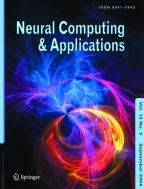670Accesses
Abstract
Killing operation is an effective measure to restore bottom-hole pressure balance after unbalanced bottom-hole pressure shut-in. In the traditional well killing operation, the opening of the hydraulic throttle valve is manually adjusted by the throttle control box, and the manual control has the problems of uncertainty and low control precision, which makes the stability control of well killing operation a difficult problem. This paper presents a feedback control model based on a large number of real-time bottom-hole data, historical data and GA-BP neural network prediction. Through the intelligent control of throttle valve opening in the process of well killing operation, the fast, accurate and stable self-feedback control of bottom-hole pressure prediction and prediction output is realized. The analysis results show that the control model predicted by GA-BP neural network can effectively adjust the throttle opening and realize the stable and effective control of bottom-hole pressure.
This is a preview of subscription content,log in via an institution to check access.
Access this article
Subscribe and save
- Get 10 units per month
- Download Article/Chapter or eBook
- 1 Unit = 1 Article or 1 Chapter
- Cancel anytime
Buy Now
Price includes VAT (Japan)
Instant access to the full article PDF.





















Similar content being viewed by others
Explore related subjects
Discover the latest articles, news and stories from top researchers in related subjects.References
Zhang J (2016) Discussion on the scheme of dealing with overflow well in drilling construction. Sci Technol Inf 14(5):44–45.https://doi.org/10.16661/j.cnki.1672-3791.2016.05.044
Deng S(2018) Application of throttle kill manifold in well control technology. Technol Market 25(12):93–94.https://doi.org/10.3969/j.issn.1006-8554.2018.12.0
Nan S (2017) Study on two kinds of conventional well killing. Petrochem Technol.https://doi.org/10.3969/j.issn.1006-0235.2017.04.157
Lage ACV, Nakagawa E, Cordovil Y (1994) A. Well Control Procedures in DeepWater. In: SPE Latin America/Caribbean petroleum engineering conference. Society of Petroleum Engineers
Christman S, Kelly A, Plaisance M, et al (1999) An overview of the IADC deep water well control guidelines. In: SPE/IADC drilling conference
Yuan Z, Hashemian Y, Morrell D (2015) Ultra-deepwater blowout well control analysis under worst case blowout scenario. J Nat Gas Sci Eng 27:122–129
Shilin Z (2016) Study on the application of dynamic killing drilling method in complex formation pressure system. Chongqing Institute of Science and Technology, Chongqing
Kanhua S, Guangchen Z (2007) Error analysis of riser pressure control in conventional well killing process. Drill Prod Technol 30(4):20–23
Liang H, Zou J, Li Z et al (2019) Dynamic evaluation of drilling leakage risk based on fuzzy theory and PSO-SVR algorithm. Future Gener Comput Syst 95(2019):454–466
Li Y (2019) Experimental study on automatic well killing system of drilling method. Prod Saf Sci Technol China. 1673-193X(2019-03):30–36
Liang H, Zou J, Zuo K et al (2020) An improved genetic algorithm optimization fuzzy controller applied to the wellhead back pressure control system. Mech Syst Signal Process 142(2020):142
Liu G, Xing J, Xia H (2002) Throttle pressure control technology for underbalanced drilling. J Jianghan Pet Inst. ISSN:1000-9752 (2002-04):53-54+4-3
Li Y (2019) Development and application of electric push rod protection device for E-type gate. E-World. ISSN:1000-1344 (2019-07):51-52
Wang D, Li C, Wang Q et al (2006) Dynamic analysis of electro-hydraulic proportional throttling well control system. Spec Oil Gas Reserv 13(6):101–104
Yong T, Changyin G, Zongcai W (2011) Hydraulic and pneumatic transmission technology and application. Electronic Industry Press, Beijing
Emperor sur, (1979) Hydraulic fluid mechanics. National Defense Industry Press, Beijing, pp 168–169
Zhang T, Li J, Liu G et al (2014) Study on pressure regulation characteristics of automatic throttle manifold in controlled pressure drilling. Oil Drill Technol 42(2):18–22
Haibo Liang, Zhenglin Li, Guoliang Li (2019) Neural network prediction model to achieve intelligent control of unbalanced drilling’s underpressure value. Multimedia Tools Appl 78(21):29823–29851
Qu Y, Wei H et al (2020) Prediction of soil PAHs content in urban parks in Beijing based on BP neural network. Environ Sci Res. ISSN:1001-6929 (2020.03.35)
Li R, Zhang H (2020) BP neural network and improved differential evolution for transient electromagnetic inversion. Comput Geosci.https://doi.org/10.1016/j.cageo.2020.104434
Liu Z, Liu A, Wang C, Niu Z (2004) Evolving neural network using real coded genetic algorithm (GA) for multispectral image classification. Future Gener Comput Syst 20(7):1119–1129
Meng M, Longzhang Z, Xiewen G et al (2018) Research and application of BP neural network based on genetic algorithm optimization. Modern Electron Technol 41(9):42–44
Funding
Funding was provided by Sichuan Science and Technology Innovation and Venture Seedling Project (Grant No.: 20MZGC0139), Graduate innovation fund of Southwest Petroleum University (Grant No. 2019cxyb003).
Author information
Authors and Affiliations
School of Mechanical Engineering, Southwest Petroleum University, Chengdu, 610500, China
Haibo Liang & Qi Wei
CNPC Chuanqing Drilling Engineering Technology Research Institute, Deyang, 618300, China
Dengyun Lu & Zhiling Li
- Haibo Liang
You can also search for this author inPubMed Google Scholar
- Qi Wei
You can also search for this author inPubMed Google Scholar
- Dengyun Lu
You can also search for this author inPubMed Google Scholar
- Zhiling Li
You can also search for this author inPubMed Google Scholar
Corresponding author
Correspondence toHaibo Liang.
Ethics declarations
Conflict of interest
We declare that we have no financial and personal relationships with other people or organizations that can inappropriately influence our work; there is no professional or other personal interest of any nature or kind in any product.
Additional information
Publisher's Note
Springer Nature remains neutral with regard to jurisdictional claims in published maps and institutional affiliations.
Rights and permissions
About this article
Cite this article
Liang, H., Wei, Q., Lu, D.et al. Application of GA-BP neural network algorithm in killing well control system.Neural Comput & Applic33, 949–960 (2021). https://doi.org/10.1007/s00521-020-05298-4
Received:
Accepted:
Published:
Issue Date:
Share this article
Anyone you share the following link with will be able to read this content:
Sorry, a shareable link is not currently available for this article.
Provided by the Springer Nature SharedIt content-sharing initiative

